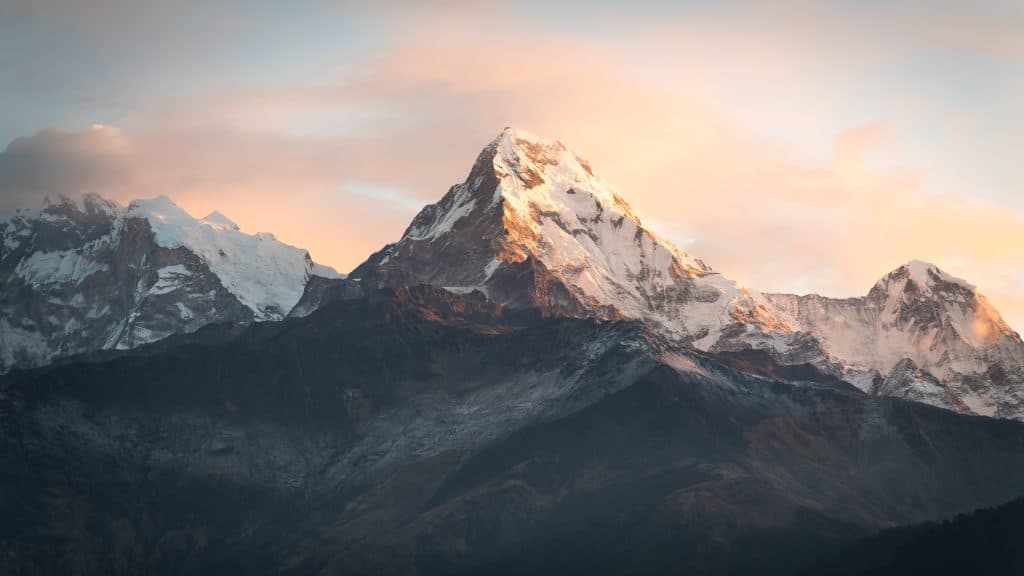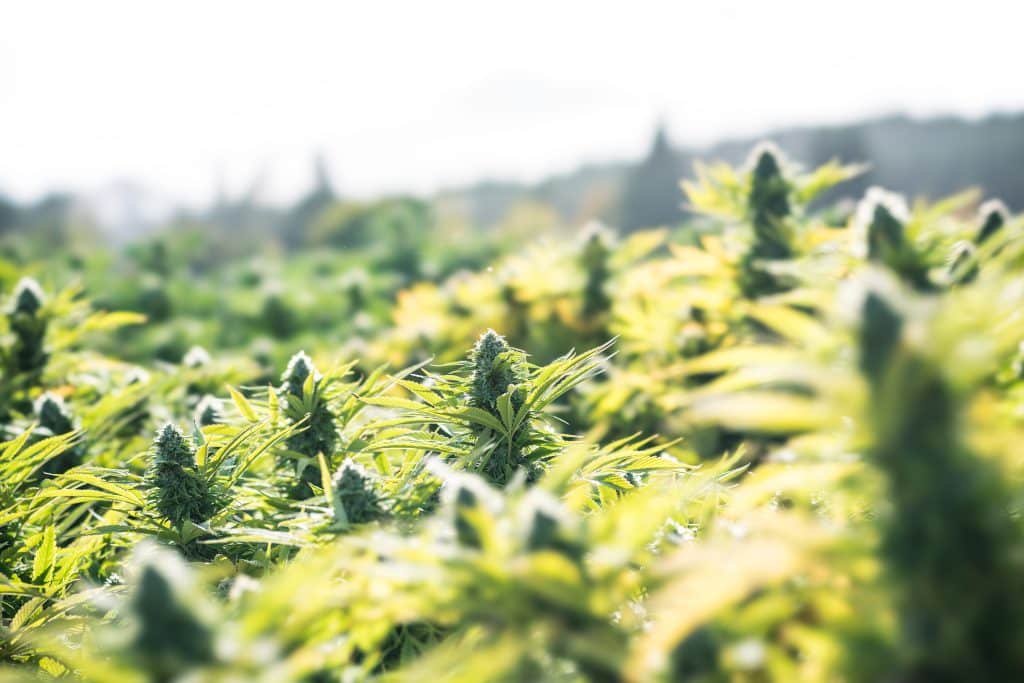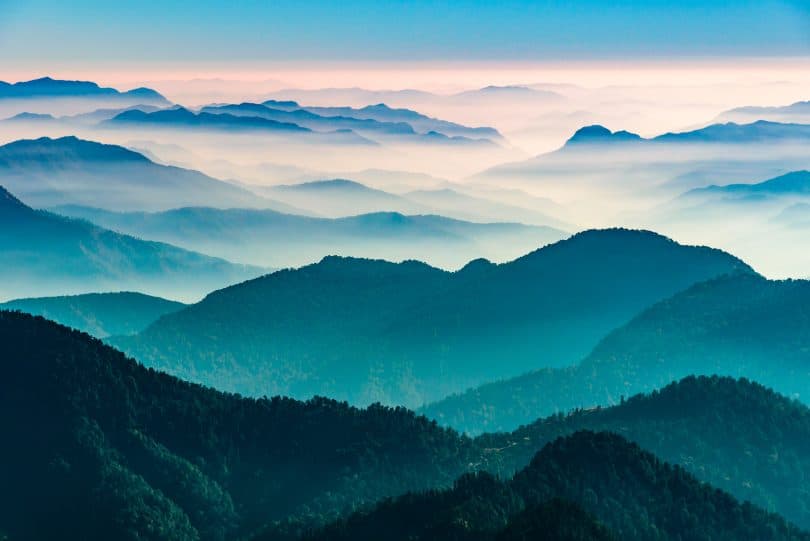Deep in Asia, rising high above the rest of the world, between Nepal and China but within Tibet, sits the god-like Himalayan mountain range. These black and white peaks stand like etched statues in the horizon like ancient myths. The view, if you’re ever lucky enough to see it, is one that you will never forget. Well, I just returned from a trek of a lifetime to the base camp of one of the largest mountains in the region: Annapurna.
First things first, it wasn’t easy. The trek covered 110km over 10 days, reaching heights of 4200 meters, altitude sickness and blood-sucking leeches blessed the route, and it was only the distant views of the Himalayan peaks and a stash of natural bush weed we found on our way that kept us going. This is the story of how Nepalese cannabis helped me complete the infamous Annapurna base camp trek in the Himalayas.
To stay current on everything important happening in the industry, subscribe to The Cannadelics Weekly Newsletter. Also, it’ll get you premium access to deals on cannabis flowers, vapes, edibles, and much more! We’ve also got standout offers on cannabinoids, like HHC-O, Delta 8, Delta 9 THC, Delta-10 THC, THCO, THCV, THCP & HHC, which won’t kill your bank account. Head over to our “Best-of” lists to get these deals, and remember to enjoy responsibly!
The Himalayas
The Himalayas is one of the most – if not the most – famous mountain ranges in the world. It sits in the continent of Asia and separates the nations of India and China. Covering a width of 590,000km squared, the region spans over many nations: Bhutan, India, Nepal, China and Pakistan. This is why it’s often difficult to define who legally owns the Himalayas, and with very few people having managed to summit these mountains, it’s unlikely that there will be a war to decide who has rights over them anytime soon. There are many reasons why this region is so important.
First of all, the Himalayas are the third largest deposit of ice and snow on Earth, after Antarctica and the Arctic. Secondly, this region and its many major rivers help to regulate the planet’s climate. But other than the climactic importance of the Himalayas, it is also home to 9 out of 10 of the highest peaks in the world – including, of course, Mount Everest. This mountain climbs to the height of 8,849 Meters and is the highest point on Earth. National Geographic writes:
“How dangerous is it? As of the end of the 2018 season, the Himalayan Database reports that 295 people are known to have died climbing Everest, while there have been 9,159 successful summit climbs by 5,294 people.”
Whilst Everest is the highest mountain in the world, it is now one of the most consistently climbed. Thanks to improvements in technology and consistent expeditions, this mountain has become safer to climb. That’s not to say that it isn’t a huge feat of mankind – facing landslides, avalanches and seriously dangerous terrain – but it has become more common. In fact, the record of summits came in 2018 when 800 people climbed it.
Annapurna Mountain
Annapurna has only ever been summited by 191 people and has a death rate of 32%. That is why it is considered one of the deadliest in the region. It sits at 8,091 meters, which is of course smaller than Everest, but it’s made difficult by its steepness and architecture. Its south face, which is a steep ‘wall of rock’ that climbs 3,000 meters, is considered one of the hardest climbs on Earth. Breeze Adventure writes:
“Annapurna Mountain is full of seracs, crevasses, sharp ridges, and other difficult elements… There is always a chance for an avalanche to occur, and big chunks of ice and boulders falling from the mountain… Unlike many other mountains that the mountaineers climb upon, Annapurna range is secluded. So, it’s quite tough to get the help on time, provided that any health risk occurs.”

Now it’s important to realize that I wasn’t about to try and attempt to climb the summit of Annapurna. I am far too inexperienced and an enjoyer of low altitude to do that. I like my feet on the ground. However, I was about to trek to the Annapurna Base Camp, which is over halfway up at 4130 meters. As treks go in Nepal this one is considered ‘moderate and demanding’, but it was far more than those two words can describe.
Trekking in Nepal
The Himalayas cover around 75% of the nation of Nepal, which is why trekking to the region from this country is so popular. In fact, due to the Lord of the Rings-like scenery, there are hundreds of organized treks from Nepal. The one I completed was the Annapurna Base Camp trek, with a detour to Poon Hill, and it lasted 10 days – with around 6 hours walking each day. The Himalayan Glacier writes:
“Experience the glorious trek to Annapurna Base Camp, one of Nepal’s classic short treks amid spectacular high peaks. Annapurna Base Camp Trek (ABC) is an amazing walk through diverse landscape and culture complete with rich mountain vistas, terraced fields, quaint Gurung villages and a wide variety of flora and fauna.”
I’ll be honest, in comparison with other treks and according to professionals, the ABC would be considered a walk in the park – quite literally. But for myself and my girlfriend, this was far from that. We weren’t expecting the hugely demanding 3000 steps up to Ulleri, or the dangerous landslide cliff face routes to Chomrong, the constant rain, the shivering nights in teahouses and, who could forget, the blood sucking leeches that only want to cause pain and discomfort to everyone you love. The leeches, or ‘juka’ in Nepali, come out of the soil during monsoon time and will do whatever it takes to get a suckle of your blood. However, whilst I had many bloody socks and my girlfriend even had an unfortunate incident with a leech and her breast, it wasn’t too fatal.
Bush Weed
Whilst we were pushing on through beautiful, quaint, hilltop Nepali villages, exhausted, needing some reason to go on, the grey sky suddenly cleared and for the first time we saw the peaks of the Himalayas. We must have been walking for 4 days, in the dreary monsoon season, with no view of the peaks. But there they were, in all their glory, like black and white sketches on blue paper, it was truly magical. But not only that, as the sunlight pierced through the clouds, they shone on the ground in front of us and there, also filling our noses as well as our eyes, was a sea of bush weed. The cannabis indica plant grows wild in Nepal, especially in the mountain regions. In fact, there is a common belief that the first ever cannabis plant was found on the base of the Himalayas. Perhaps that is the same place I found these ones. Alchimia writes:
“Over the centuries, Nepal has made a name for itself in cannabis culture for several reasons, such as its spectacular sativas, its incomparable handmade hashish or charas, and the natural way in which consumption was handled by the authorities (as well as the arrival of western tourists attracted by precisely these reasons) during the 60s and early 70s.”

Whilst the plant has been technically illegal and punished strictly since 1976, cannabis still has an important place in religious practices and grows freely. Amazed by the sight of naturally growing weed – we definitely don’t get that in the UK – we began to pick as much as we could and stash it in our pockets. This was definitely our saving grace. Each evening, in our cold teahouse, we would roll up a joint and allow it to relax our aching bodies.
We didn’t want to smoke too much, as it is known to dehydrate and reduce lung abilities, but one joint an evening was a huge help to us. The cannabis itself had a beautifully dull high and didn’t send us ‘west’ – as the kids would say. No paranoia, no uncomfortable feeling, just a relaxing sensation and a smile on both our faces. However, this wasn’t the end of the story. As we reached the Annapurna base camp altitude sickness took hold. At 4100 meters, I began to feel nauseous, have cold sweats, and my head was pounding. The rule with altitude in the Himalayas is that if you begin to vomit, you must descend immediately.
I felt like I wasn’t far off. The issue was, it was dark, pouring with rain, and a long way to the lower teahouse. I didn’t know what to do. But in an act of inspiration, one of the Nepali guides prepared me some strong garlic soup and told me to have a few puffs of a joint. It was magic, within 15 minutes I was better. The research into cannabis as a cure for altitude sickness is limited, so I wouldn’t advise anyone to use this story as gospel. But for me it worked, and I was extremely thankful it did. Emerald Health Advocates writes:
“If you do decide to try medical marijuana to combat your altitude sickness, it’s important to remember that marijuana can increase dehydration, so drink plenty of fluid. Keep your doses low and wait at least five minutes to see what effect it has on your system”
Final Thoughts
If you’re reading this and considering doing the ABC trek, don’t be put off by how hard I found it. Overall, it was an amazing experience and one I will never forget. The views were incredible and the Himalayas are something to marvel at. The monsoon season was the real reason for our hardship and perhaps if we’d gone at a different time the leeches and cold wouldn’t have slightly tarnished the experience. But, at the same time, it was the monsoon that caused such a lustrous growth of gorgeous bush weed. You win some, you lose some, I suppose.
Hello readers! We appreciate you joining us at Cannadelics.com, a top choice news platform for independent coverage of the growing cannabis and psychedelics landscapes of today. Come by the site whenever possible for updates on current and world-changing events, and head over to the Cannadelics Weekly Newsletter, so you’re always up on what’s going down.









